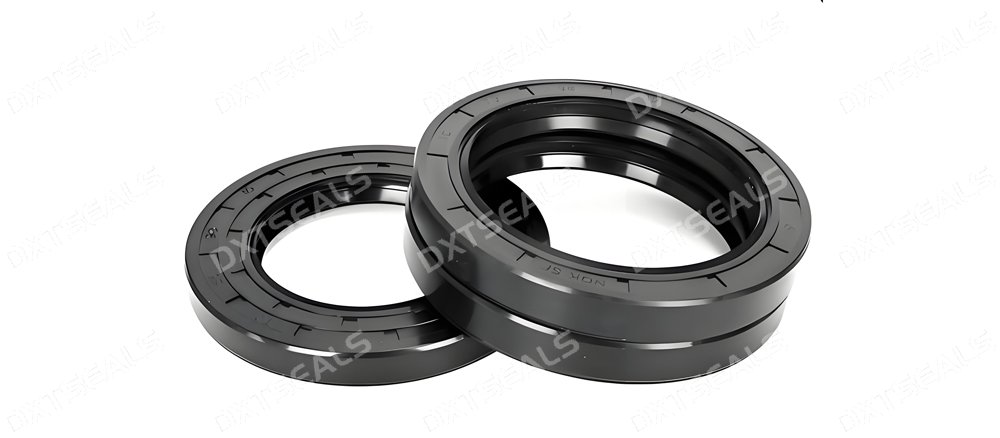
In modern machinery, oil seals play a critical role in maintaining system integrity, ensuring lubrication, and preventing contamination. While often underestimated in size, their importance in system reliability, efficiency, and longevity is enormous.
In this article, DXTSEALS provides a detailed overview of oil seal structure, function, materials, and performance characteristics, helping you understand how to select the right oil seal for your industrial applications.
🧩 What Is an Oil Seal?
An oil seal, also known as a rotary shaft seal or radial lip seal, is a mechanical component used to seal around rotating shafts. Its primary function is to prevent the leakage of lubricants while blocking contaminants like dust, dirt, and moisture from entering mechanical systems.
Common application areas include:
-
Automotive engines and transmissions
-
Hydraulic pumps and motors
-
Industrial gearboxes and compressors
-
Agricultural and construction machinery
🛠️ Oil Seal Structure: Key Components
An oil seal typically consists of the following main parts:
-
Sealing Lip
-
The flexible part that contacts the shaft and maintains the sealing function.
-
May include a dust lip for extra protection.
-
-
Spring (Garter Spring)
-
Applies radial force to the sealing lip, ensuring consistent contact pressure.
-
-
Metal Case
-
Provides structural stability and support.
-
-
Rubber Outer Layer
-
Ensures a tight fit within the housing, compensating for housing surface roughness.
-
This simple but efficient design allows oil seals to operate at high speeds, under variable temperatures, and in diverse environments.
⚙️ Key Functional Characteristics
Oil seals offer several important features that make them indispensable:
1. Leakage Prevention
-
Keeps lubricants such as oil or grease inside the system, reducing wear and friction.
2. Contaminant Exclusion
-
Prevents dust, dirt, and water from damaging bearings and gears.
3. Shaft Protection
-
Minimizes contact wear by distributing load evenly around the shaft.
4. Vibration Damping
-
Reduces micro-vibrations and supports system stability during rotation.
5. Material Versatility
-
Available in NBR, FKM, PTFE, and more—each suited for specific chemical and temperature conditions.
🧪 Oil Seal Performance Considerations
When evaluating oil seal performance, consider the following:
| Parameter | Description |
|---|---|
| Speed Rating | Max allowable shaft RPM |
| Temperature Range | Operating temperature compatibility |
| Media Compatibility | Resistance to oils, fuels, and chemicals |
| Shaft Surface Finish | Affects sealing contact and wear |
| Installation Tolerance | Determines the seal's housing fit |
🏭 Why Choose DXTSEALS Oil Seals?
At DXTSEALS, we engineer oil seals that excel under pressure, speed, and harsh environmental conditions. Our seals are precision-manufactured using advanced CNC processes and tailored to your industry needs.
🔹 Custom designs for automotive, industrial, and hydraulic systems
🔹 Premium materials for enhanced chemical and thermal resistance
🔹 Fast prototyping and flexible order quantities
🔹 ISO-compliant quality standards
From OEM collaborations to high-performance sealing solutions, DXTSEALS is your trusted partner.
✅ Conclusion
Oil seals are essential components that provide critical sealing, protection, and reliability for rotating machinery. By understanding their structure and performance characteristics, you can make better decisions that enhance the efficiency and durability of your equipment.
Looking for reliable oil seals? Visit www.dxtseals.com to explore our full catalog and request customized sealing solutions today.
